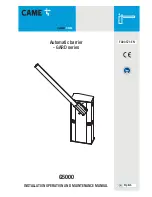
Montage der Dachhaken
6
1.4
Planning the stringing
Before mounting, plan the string cabling between the solar
modules and inverters. Lay out the plus and minus cables as
close to each other as possible in order to avoid overvoltage
coupling. Make sure that the gap between the cables is kept to a
minimum.
The cabling should not rest on the roof. Make sure that all
cables and cable connectors are fitted in accordance DIN VWE
0100-712.522.8.1 (protection against earthing and short
circuits). Use a duct or a disused chimney flue to route the
cabling down to the basement of the building. By laying cable
ducting on the outside of a building, it is possible to avoid any
building works inside. Either way, make sure fire safety is not
compromised.
Attach connectors to the ends of the DC cables. LORENZ Monta-
gesysteme GmbH supplies crimping pliers and mounting tools
from a variety of suppliers for this purpose.
Measuring the open-circuit voltage
Preparatory work
1.5
Lightning protection and equipotential
planning
Fit an equipotential bond to avoid over-voltage. The equipotenti-
al between the mounting system and the trapezoidal sheet roof is
ensured, in accordance with DIN/VDE standards, by using thin
sheet metal screws. Should the building have lightning protection,
the solar system should be taken into account. In such cases, we
recommend that you work with a specialist lightning protection
company. Please follow European standard DIN EN 62305 (VDE
0185).
2. Preparation
2.1
Testing modules
Check the functionality of the solar modules before mounting.
Measure the open-circuit voltage of each individual module.
Always test one module at once, not a complete string. There
could be dangerously high voltages. Note the serial number of
each module and its position in the module field.
2.2
Check the inverters
Before installing each inverter, check the type of protection it has
(e.g. IP54), the recommended ambient temperature and the noise
level. For external applications, the equipment must be protected
against dust and moisture. Please note that only specialist electri-
cal companies are permitted to connect the device to the grid.
2.3
Use of safety equipment
Note:
You must install all necessary safety equipment on the roof
before beginning work. Read the instructions given in Chapter 4
of this manual.
Planning the stringing


































